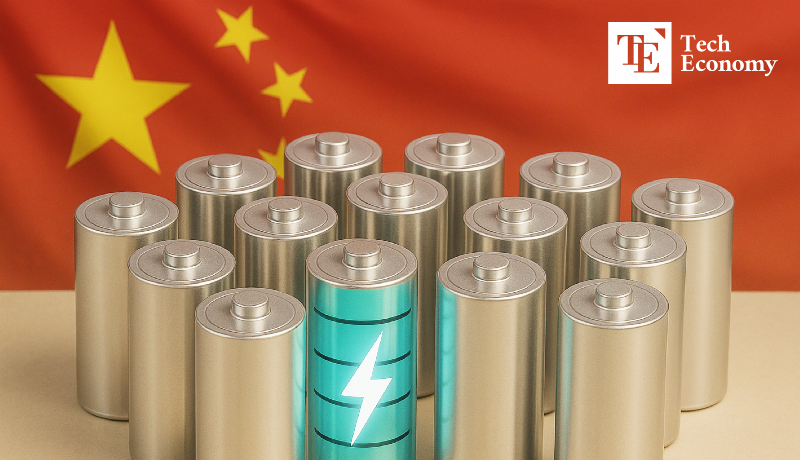Input
Changed
Q1 EV Battery Market Chinese Companies Capture 67.5% Share China’s Dominance Strategy Led by CATL

In the fast-evolving global race toward electrification, one country has emerged as the uncontested frontrunner: China. What began as a strategic push into electric vehicle (EV) technologies has now matured into full-spectrum dominance of the EV battery industry—from mining and refining critical minerals to manufacturing and global distribution. At the forefront of this expansion is CATL (Contemporary Amperex Technology Co., Limited), the world’s largest battery maker, which has successfully parlayed government support, cost-effective technologies, and expansive supply chains into a commanding global presence.
Meanwhile, South Korea and Japan, once formidable contenders in the high-tech battery market, are now struggling to keep pace. Despite their technological sophistication, both countries are losing market share to Chinese competitors that benefit from state-subsidized resource control and aggressive global expansion. The issue is no longer limited to market share—it has become a question of who controls the future of the EV industry. And increasingly, that answer is China.
Asia’s “Big Four” Dominate Two-Thirds of Battery Metal Spending
According to data from EV supply chain consultancy Adamas Intelligence, the global battery sector saw a significant surge in demand for essential materials in the first quarter of 2025. Approximately USD 3.01 billion worth of battery metals—including graphite, lithium, nickel, cobalt, and manganese—was used in EV battery packs sold globally, reflecting a 1.3% year-on-year increase. Even more striking was the 27% increase in volume, totaling 428,200 tons of core materials compared to the same period last year.
Of this enormous supply, 94% of raw material expenditures came from companies based in Asia—specifically China, South Korea, and Japan. This trio of nations effectively monopolizes the battery metal market, but even among them, China has surged ahead.
The top four players—CATL, BYD, LG Energy Solution (LGES), and Panasonic—are the heavyweights of the battery world, together accounting for nearly two-thirds of global battery metal purchases. While South Korean and Japanese firms are still significant players, they are increasingly overshadowed by China’s aggressive push. Chinese firms not only manufacture batteries at scale but also exert substantial influence over the critical minerals market, especially lithium, where China controls over half of the Asian supply.
This influence is no accident. China’s dominance stems from long-term strategic planning, including massive state investment, foreign mine acquisitions, and long-term procurement contracts that ensure a stable and affordable flow of raw materials. This has given Chinese companies the edge in one of the most competitive industries of the 21st century.
CATL Leads the Pack with Record Market Share
China’s leadership in the EV battery race is personified by CATL, which has secured its status as the world’s top battery producer through a combination of scale, innovation, and policy backing. In the first quarter of 2025, CATL reported a 40.2% year-over-year increase in installed battery capacity, reaching 84.9 GWh. This remarkable performance translates to a 38.3% global market share, solidifying its dominant position.
CATL’s batteries are widely adopted not only by rising Chinese EV brands like Zeekr, Aito, Li Auto, and Xiaomi, but also by global automotive leaders including Tesla, BMW, Mercedes-Benz, and Volkswagen Group. This widespread adoption reflects not just product quality, but also price competitiveness, thanks in large part to CATL’s strategic focus on LFP (lithium iron phosphate) technology.
Unlike the more expensive NCM (nickel cobalt manganese) batteries preferred by South Korean and Japanese firms, LFP batteries rely on more abundant and affordable materials. In China, LFP now accounts for over 50% of the battery market, and BYD, another Chinese powerhouse, has fully transitioned its lineup to LFP-based systems. This shift allows Chinese manufacturers to dramatically reduce spending on expensive minerals like nickel and cobalt, tightening their grip on the market while keeping costs low.
BYD, with a market share of 16.7% and 37.0 GWh of installed battery capacity in Q1 2025, has become a powerful runner-up to CATL. The company, which both manufactures EVs and produces its own batteries, saw a 62.0% jump in installations compared to the previous year. After selling nearly 4 million EVs in 2024, BYD now aims for 6 million in 2025, with major expansions underway in both Asia and Europe.
In contrast, South Korean firms are faltering. The combined installed capacity of the country’s “big three”—LG Energy Solution, SK On, and Samsung SDI—has declined to 18.7% of global share, down from 23.2% a year earlier. This 4.6 percentage point drop reflects not only supply chain disadvantages but also capital limitations when compared to Chinese rivals. South Korea remains heavily reliant on imported minerals, which are increasingly expensive and less secure in availability.
Japan’s Panasonic fares no better. Once considered a global battery leader, the company now holds just 3.3% of the global market. Unlike their Chinese counterparts, Japanese and Korean firms have struggled to secure critical mineral supplies through long-term deals or overseas mining ventures. Without such foundations, their pricing remains uncompetitive, and their market presence continues to erode.

U.S. House Passes Tax Cut Bill Aimed at Curbing China's Dominance
The growing dominance of China—and especially CATL—has not gone unnoticed in Washington. As China tightens its hold over both battery manufacturing and the raw materials needed for it, the United States is stepping up legislative action to counter Beijing’s momentum.
In a bold move, the U.S. House of Representatives recently passed a new tax cut bill aimed squarely at reducing dependence on China for critical mineral supply chains. This legislation represents a major structural step following the Inflation Reduction Act (IRA) and intensifies the U.S. effort to promote domestic production and bolster partnerships with allied nations.
The bill includes strict Foreign Entity of Concern (FEOC) provisions, which directly target entities linked to foreign governments considered a security risk—most notably, Chinese firms. These provisions will limit the eligibility of Chinese battery manufacturers for U.S. government incentives, making it even harder for CATL and BYD to penetrate the American EV market.
However, the bill is not without controversy. In its effort to isolate China, it also reduces broad-based subsidies for EV purchases and green energy infrastructure. Industry stakeholders worry that this could dampen domestic demand for electric vehicles and energy storage systems (ESS) in the U.S. As consumer tax benefits shrink, EV prices could rise, threatening the growth of both upstream suppliers and downstream industries.
The challenge for the U.S. now is to find a balance between strategic independence and market stimulation—a balance China seems to have already struck. With CATL and BYD expanding aggressively and setting the pace for innovation and affordability, the global EV battery race is increasingly becoming a contest not just of technology, but of policy, capital, and control over the Earth’s most essential minerals.












